Shroud of Turin and the Sudarium of Oviedo Covered the Same Person : A Well Thought Out SCream by James Riordan
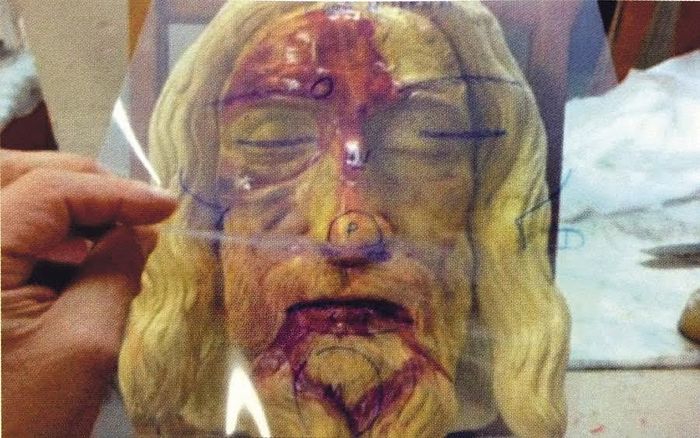
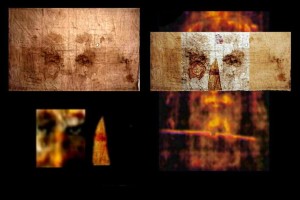
Most of us have heard a great deal about the Shroud of Turin but how many know about the Sudarium of Oviedo. While the Shroud was the linen garment that was laid over the body of Jesus in the tomb, the Sudarium was the cloth wrapped around the head of Jesus after he died. The news is that scientists have now confirmed that the Shroud and the Sudarium came from the same person. While many believe they were both used on the body of Jesus Christ, the new evidence doesn’t prove or disprove that assumption but it does provide some validity in that, as believed, both cloths came from the same person.
The research was done by Dr. Juan Manuel Miñarro, a sculpture professor at the University of Seville, as part of a project sponsored by the Valencia-based Centro Español de Sindonología (CES) (The Spanish Center of Sindonology). The official conclusion is The Shroud of Turin and the Sudarium of Oviedo “almost certainly covered the cadaver of the same person.” The investigation compared the two relics using forensics and geometry.
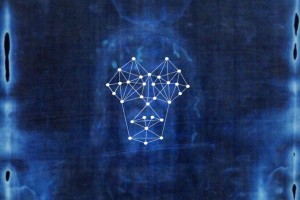 The study thus supports what tradition has held for more than two millennia: that the two cloths came from the same historical person, who, according to this tradition, was Jesus of Nazareth. The Shroud of Turin would have been the linen that covered that body of Jesus when he was placed in the tomb, while the Sudarium would have been the cloth used to cover his face on the cross after he died.
The study thus supports what tradition has held for more than two millennia: that the two cloths came from the same historical person, who, according to this tradition, was Jesus of Nazareth. The Shroud of Turin would have been the linen that covered that body of Jesus when he was placed in the tomb, while the Sudarium would have been the cloth used to cover his face on the cross after he died.
Both cloths would be those found by Peter and John in the tomb, as the Gospel recounts.
The study “doesn’t prove in itself that this person was Jesus Christ, but it does clearly advance us along the path of being able to indisputably demonstrate that the Shroud of Turin and the Sudarium were wrapped around the head of the same cadaver,” Miñarro explained to Paraula.
Researcher finds complete correspondence in the points where blood flow started
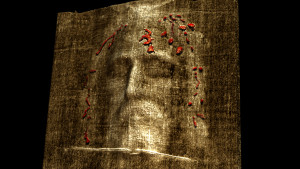 In fact, the investigation has found a number of correlations between the two relics that “far exceeds the minimum number of proofs or significant points required by most judicial systems around the world to identify a person, which is between eight and 12, while our study has demonstrated more than 20.”
In fact, the investigation has found a number of correlations between the two relics that “far exceeds the minimum number of proofs or significant points required by most judicial systems around the world to identify a person, which is between eight and 12, while our study has demonstrated more than 20.”
Specifically, the research has discovered “very important coincidences” in the principal morphological characteristics (type, size and distances of the markings), the number and distribution of the blood stains, the unique markings from some of the wounds reflected on both of the cloths or the deformed surfaces.
There are “points that demonstrate the compatibility between both cloths” in the area of the forehead, where there are remains of blood, as well as at the back of the nose, the right cheekbone and the chin, which “present different wounds.”
Regarding the blood stains, Miñarro explained that the marks found on the two cloths have morphological differences, but that “what seems unquestionable is that the sources, the points from which blood began to flow, correspond entirely.”
The variations could be explained by the fact that “the contact with the [cloths] was different” in regard to duration, placement and intensity of the contact of the head with each of the cloths, as well as the “elasticity of the weave of each linen.”
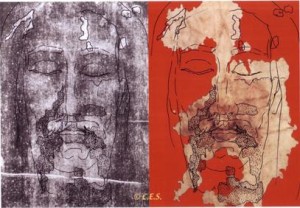 Certainly, the coincidences demonstrated on the two cloths “are such that now it is very difficult to think that they came from different people,” according to Jorge Manuel Rodríguez, president of the CES.
Certainly, the coincidences demonstrated on the two cloths “are such that now it is very difficult to think that they came from different people,” according to Jorge Manuel Rodríguez, president of the CES.
In the light of this investigation, he said, “we have come to a point where it seems absurd to suggest that ‘by happenstance’ all of the wounds, lesions and swelling coincides on both cloths. … Logic requires that we conclude that we are speaking of the same person.”
For there is nothing hidden that will not be disclosed, and nothing concealed that will not be known or brought out into the open.—Luke 8:17
___


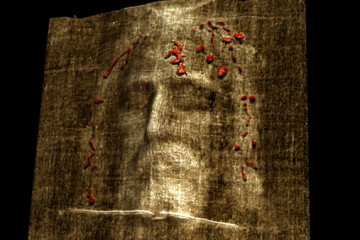
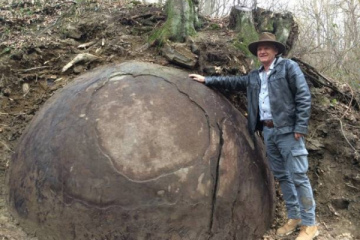

1 Comment
[…] How the Sudarium fits perfectly with the Shroud of Turin. Image: Men of Value. […]